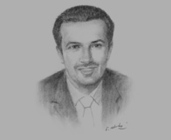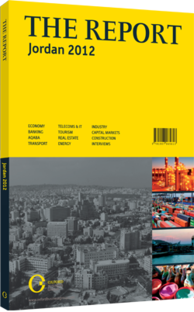OBG talks to Nayef Al Fayez, Minister of Tourism and Antiquities

Interview: Nayef Al Fayez
What factors caused the decline in tourism revenues in 2011? What steps are being taken to promote growth in the sector in 2012?
NAYEF AL FAYEZ: Several factors contributed to the decline in tourism. Arrivals from Europe and North America have seen a significant drop largely due to the global financial crisis, and many of these countries are still suffering from an economic setback.
Another major factor has been the Arab Spring, which has had a direct impact on nearby countries. Travel between Jordan and its neighbours, such as Syria and Egypt, has declined by about 40% as fewer Arab tourists pass through Jordan on their way to those destinations. However, some travellers who in the past would have only passed through Jordan are now choosing to remain here. That change is reflected in our tourism statistics, which indicate that overnight travel dropped by only 16% while same day visitors declined by 24%.
Despite the overall decline, tourism from markets in Asia and South America is growing. In 2011 the number of tourists from India increased by about 7.3%.
Considering the recent events in the region, Jordan’s tourism industry remains relatively strong, and we are confident that there will be a resurgence. The sector currently accounts for roughly 15% of our GDP, and we hope to increase that number to 18% by 2020. We estimate that between 2011 and 2015 the tourism business will create roughly 42,000 direct jobs, plus several thousand more through the multiplier effect.
Given the instability in the region, how important is it for Jordan to begin promoting itself as an independent, stand-alone destination?
AL FAYEZ: Many people have difficulty differentiating between Jordan and neighbouring countries. In 2011, when significant unrest occurred in the region, it was assumed that the conflicts were occurring in Jordan as well. As a result, one of our main objectives has been to position Jordan as a stand-alone destination by ensuring that media coverage distinguishes between the situation here and developments in other the Middle Eastern countries. This strategy is particularly important with regard to Western and European media, as many of those tourists have avoided travelling to Jordan for fear of instability. In reality, one of the country’s most attractive qualities for both tourists and investors is our stability within an often volatile region.
Which growth markets are you targeting in order to attract a wider range of visitors?
AL FAYEZ: We have adopted a strategy that looks beyond 2012 and focuses on the future. Recently, we have concentrated more of our efforts on China, India and major emerging markets in South America, such as Brazil. We are also paying attention to the way in which we target various segments in each country.
We are also making a point to differentiate between the various tourism markets. Western Europeans are generally more eager to experience our culture and heritage with trips to historical sights such as Petra or Jerash. Many Russian tourists come in search of warmer weather and beaches. In contrast, most of the Arab market is primarily interested in experiencing aspects of city life in Amman. Our goal is to have the various tourism offerings complement each other.
In which tourism sectors are foreign investors primarily involved? What do you identify as the most attractive opportunities for them?
AL FAYEZ: Tourism growth in Jordan depends on both international and local investment sources, and investment opportunities range in size and scale across several niches. In the leisure and entertainment segments, for example, one project currently under way in Aqaba aims to extend the beachfront by 17km. This will add more space for shopping, golf courses and water lagoons. Another attractive investment opportunity is medical tourism. Jordan, which has many high-calibre physicians and facilities, was recently ranked the fifth most popular medical tourism destination in the world.
You have reached the limit of premium articles you can view for free.
Choose from the options below to purchase print or digital editions of our Reports. You can also purchase a website subscription giving you unlimited access to all of our Reports online for 12 months.
If you have already purchased this Report or have a website subscription, please login to continue.

